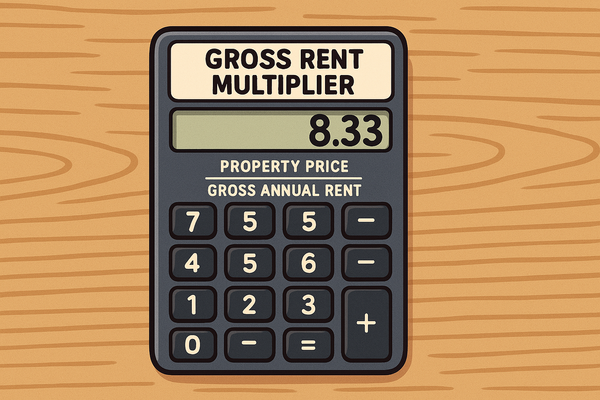All About Apartment Homes | Everything You Need to Know
Learn everything property managers need to know about apartment homes, from legal considerations to best practices for successful management and tenant satisfaction.

An apartment home is a self-contained housing unit that occupies part of a larger building, typically on a single story. This housing option serves as a cornerstone of the American residential landscape, with approximately one-third of all Americans renting their housing and an astounding 39 million people living in apartment homes across the country. As a property manager or landlord, understanding the nuances of apartment homes is essential for operational success, legal compliance, and tenant satisfaction.
In this comprehensive guide, we'll explore everything from the definition and significance of apartment homes to practical management strategies, legal considerations, and best practices.
Whether you're new to property management or looking to enhance your existing knowledge, this article will provide you with actionable insights to excel in the apartment home sector.
DEFINITION AND BACKGROUND
What Exactly Is an Apartment Home?
An apartment home represents more than just physical space—it's a self-contained housing unit that occupies part of a building, generally on a single story. The terminology varies significantly across regions, with "apartment" favored in North America, "flat" commonly used in the UK, India, and South Africa, and "unit" being the preferred term in Australia. The specific term "apartment home" emphasizes the residential aspect of these units, distinguishing them from commercial spaces in mixed-use buildings.
Government sources define an apartment home as "a structure, two or more stories in height containing multiple dwelling units," while educational institutions describe it as "one unit of one or more bedrooms in a large building, with neighbors potentially above, below, and on each side." Professional associations typically refer to an apartment home as "an individual dwelling unit, usually on a single level and often contained in a multi-unit building or development."
Historical Context and Evolution
The concept of apartment homes has evolved significantly throughout history. Ancient Roman insulae (apartment buildings) housed the majority of the urban population, while medieval European cities saw the development of multi-story tenements. The modern apartment home as we know it today began taking shape in the late 19th and early 20th centuries, particularly in rapidly growing urban centers where land values necessitated vertical development.
Today's apartment homes span a spectrum from basic studio units to luxury penthouses, with variations including garden apartments, loft apartments, and high-rise units. Understanding these distinctions is crucial for property managers seeking to position their offerings effectively in the competitive rental market.
SIGNIFICANCE IN PROPERTY MANAGEMENT
The Economic Impact of Apartment Homes
The apartment home sector represents a significant portion of the housing market, with nearly 20 million U.S. households living in apartment homes (buildings with five or more units). This scale translates to substantial economic impact for property managers and owners. The financial structure varies considerably—some apartment-dwellers own their units as part of a housing cooperative, others own within a condominium structure, but most rent from building owners or property management companies.
For property managers, this represents both opportunity and responsibility. With over one-third of American households renting their housing, the demand for quality apartment homes remains consistently strong. However, meeting this demand requires understanding market dynamics, tenant expectations, and the competitive landscape.
Social Impact and Accessibility
Apartment homes play a crucial role in providing shelter for diverse populations, including working families, young professionals, students, seniors, and others seeking affordable, flexible housing options. HUD-supported public housing alone has provided homes to more than 7 million families, highlighting the social significance of apartment homes in addressing housing needs.
Property managers who understand the social dimensions of apartment living can better tailor their offerings and services to meet tenant needs. This awareness can translate to higher occupancy rates, lower turnover, and stronger community development within apartment complexes.
PRACTICAL APPLICATIONS
Scenario 1: Streamlining Day-to-Day Operations
The Challenge: A mid-sized apartment complex with 150 units struggles with inefficient operations, including delayed rent collection, scattered maintenance requests, and inconsistent communication with tenants.
How Apartment Home Management Concepts Apply: Effective apartment home management requires systematic approaches to daily operations, including rent collection, maintenance tracking, and tenant communication.
Steps Taken:
- Implementing a digital property management system that automates rent reminders and collection
- Creating a centralized maintenance request portal accessible to all tenants
- Establishing regular communication channels, including monthly newsletters and a tenant portal
- Training staff on response protocols for various operational scenarios
The Outcome: After six months, the property saw a 15% reduction in late rent payments, a 30% decrease in maintenance response time, and significantly improved tenant satisfaction scores. The centralized systems also reduced staff administrative time by approximately 10 hours per week.
Actionable Takeaway: Invest in digital property management tools that can automate routine tasks and centralize information. Even small properties can benefit from simple, affordable solutions that streamline operations.
Scenario 2: Enhancing Tenant Retention Through Community Building
The Challenge: A garden apartment community experienced high turnover rates, with residents often leaving after just one lease term, citing lack of community connection as a primary reason.
How Apartment Home Management Concepts Apply: Apartment homes exist within communities, and fostering a sense of belonging can significantly impact tenant satisfaction and retention.
Steps Taken:
- Conducting a tenant survey to identify community priorities and interests
- Renovating underutilized common spaces to create more functional communal areas
- Implementing a monthly community events calendar with diverse activities
- Creating a resident ambassador program to welcome new tenants and facilitate connections
- Developing clear policies for communal space usage that balance accessibility with respect for all residents
The Outcome: Within one year, lease renewal rates increased by 22%, and community event participation grew from an average of 10 residents per event to over 40. The property's online reviews improved, with many specifically mentioning the strong community feel.
Actionable Takeaway: Invest time and resources in community-building initiatives that align with tenant interests and demographics. Recognize that the value of an apartment home extends beyond the individual unit to include the entire community experience.
Apartment Home Management Decision Tree
This chart serves as a helpful guide for property managers and their teams to create a system for effectively processing incoming maintenance issues, tenant complaints, lease violations, administrative requests, and general community issues.
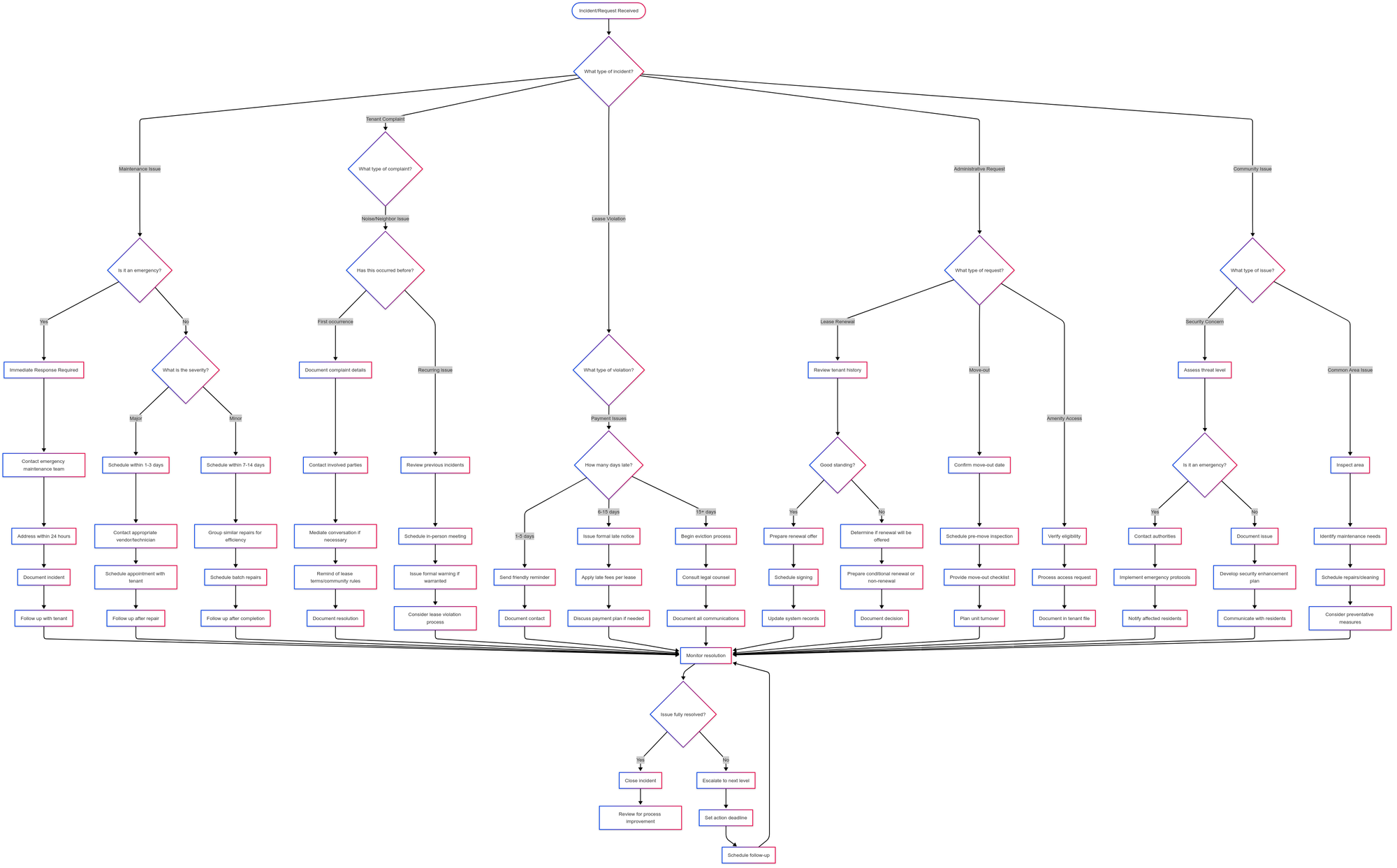
LEGAL AND COMPLIANCE CONSIDERATIONS
Federal Housing Regulations
The apartment home sector operates within a complex regulatory environment, with the Department of Justice and HUD jointly enforcing the Fair Housing Act. This foundational legislation prohibits discrimination based on race, color, religion, sex, national origin, familial status, and disability, establishing the baseline for equitable housing practices.
Property managers must ensure compliance not only with these federal regulations but also with state and local housing laws, which often impose additional requirements. Federal law requires "reasonable accommodations in rules, policies, practices, or services, when such accommodations may be necessary to afford person(s) with disabilities equal opportunity to use and enjoy a dwelling."
Licensing and Operational Requirements
Many jurisdictions require all rental property owners to be licensed, including apartment owners. These licensing requirements typically involve regular inspections, fee payments, and adherence to specific operational standards. Compliance oversight, originally HUD's responsibility, has been contracted out to public housing agencies (PHAs), who sometimes further delegate to private service providers (PSPs).
For property managers, maintaining appropriate licensing and documentation is non-negotiable. Failure to comply can result in significant penalties, including fines, operational restrictions, and in severe cases, loss of the right to manage properties.
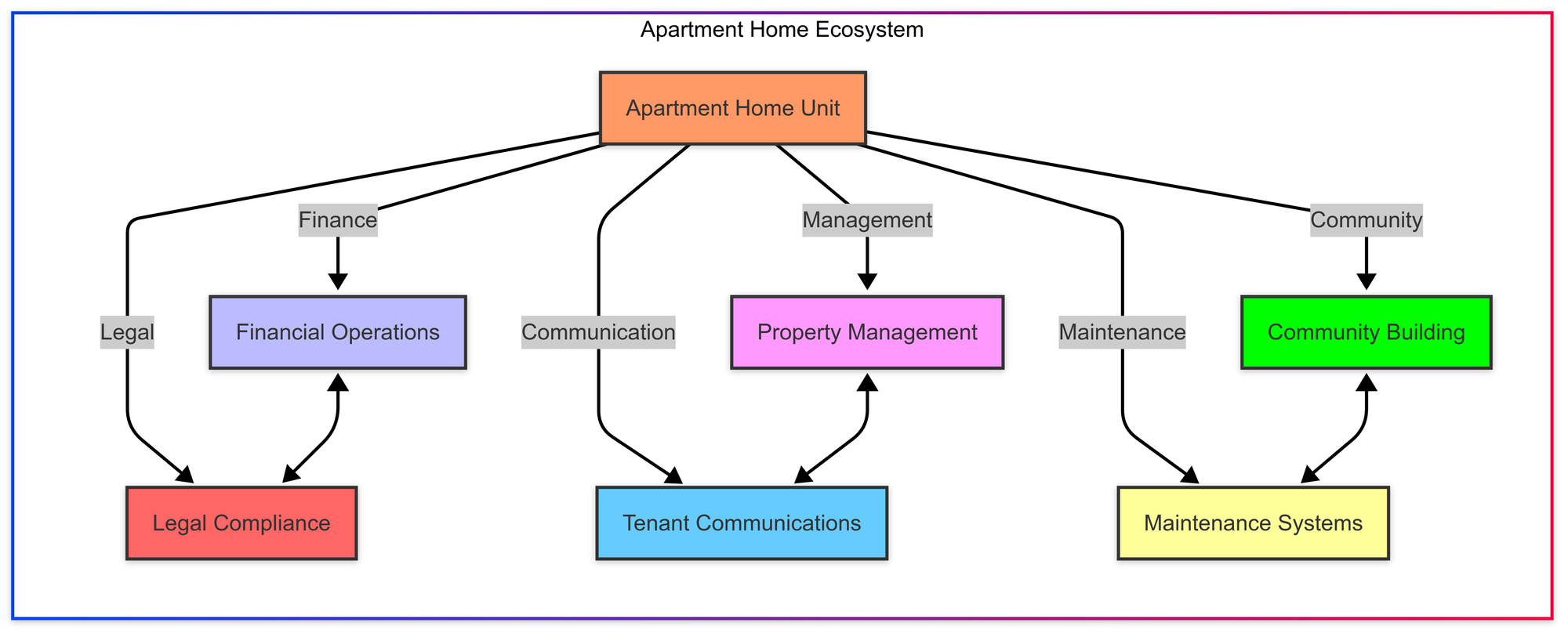
Tenant Rights and Landlord Responsibilities
Resident rights under federal housing programs include living in decent, safe, and sanitary housing free from environmental hazards, receiving timely repairs upon request, receiving written notice of non-emergency inspections, and protection from eviction except for causes stated in the lease. These rights create corresponding responsibilities for property managers.
Geographical variations in tenant-landlord laws can create compliance challenges for property managers operating across multiple jurisdictions. Staying informed about local regulations and maintaining jurisdiction-specific policies is essential for avoiding legal complications.
BEST PRACTICES
The chart below provides a helpful guide for which management practices have the most significant influence, or impact, on tenant satisfaction. Overall improvement of tenant satisfaction directly influences the likelihood of renewals, referrals, and positive reviews.
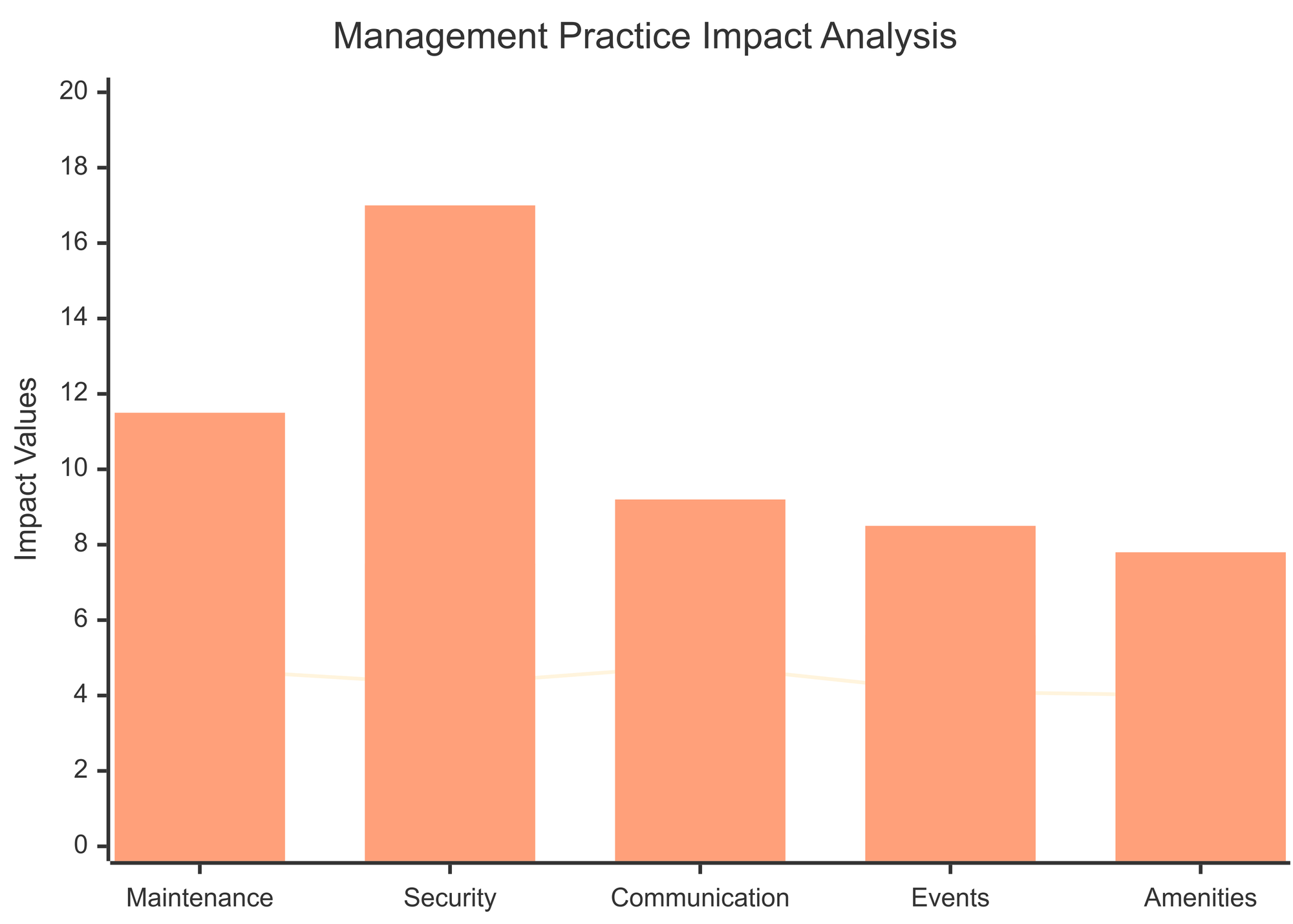
The factors that have the highest impact on tenant satisfaction rates are:
- Security Policies & Systems
- Maintenance Response Time + Satisfactory Resolution
- Efficient Communication
- Community Events
- Amenities
If you want to improve your tenant satisfaction rates, and thereby improve the odds of earning lease renewals, easy tenant referrals, and positive reviews online, you'll want to make sure you focus on creating best practices around these five core things.
Establish Clear and Consistent Communication Channels
Clear communication forms the foundation of successful apartment home management. Implement multiple communication channels—email, phone, resident portal, and in-person options—to ensure all tenants can easily reach management. Establish response time expectations and adhere to them consistently.
Property managers should develop a comprehensive communication strategy that includes regular updates, emergency protocols, and feedback mechanisms. Training staff to communicate effectively with diverse tenant populations is equally important, ensuring all residents feel heard and respected.
Implementation Steps:
- Create a communication policy document that outlines various channels and expected response times
- Implement a tenant portal that centralizes maintenance requests, rent payments, and community information
- Establish regular office hours when management is available for in-person conversations
- Provide translation services where needed to accommodate non-English-speaking residents
Implement Proactive Maintenance Systems
Preventative maintenance saves money and increases tenant satisfaction. Develop comprehensive maintenance schedules that address both routine upkeep and seasonal needs. Providing 24/7 emergency maintenance staffed by trained professionals who can address issues immediately is consistently rated as one of the most valued services by apartment residents.
Regular inspections allow for early identification of potential issues, preventing minor problems from becoming major repairs. This proactive approach not only reduces costs but also demonstrates commitment to property condition and tenant well-being.
Implementation Steps:
- Create detailed maintenance schedules for daily, weekly, monthly, and seasonal tasks
- Implement a digital maintenance request and tracking system
- Conduct quarterly unit inspections with advance notice to residents
- Develop relationships with reliable service providers for specialized maintenance needs
- Train maintenance staff on both technical skills and customer service
Prioritize Safety and Security Measures
Safety concerns rank among the top priorities for apartment residents. Implement and maintain comprehensive security measures, including adequate lighting, secure entry systems, and regular safety audits. Clearly communicate safety protocols to all residents and staff.
Maintaining life safety standards, including keeping up with inspections and compliance with local guidelines, should be non-negotiable. Property managers must regularly review and update safety measures based on changing conditions and emerging best practices.
Implementation Steps:
- Conduct regular safety audits of all common areas and building exteriors
- Install and maintain appropriate security systems, including cameras and access controls
- Provide safety information in move-in packets and refresh through regular communications
- Establish relationships with local law enforcement and emergency services
- Develop emergency response plans for various scenarios, from natural disasters to security incidents
Develop Strategic Tenant Selection Processes
The right tenant selection process balances occupancy goals with risk management. Implement structured procedures for resident recruitment, selection, move-in, and residency that adhere to fair housing laws while effectively screening for qualified tenants.
Screening criteria should be clear, consistent, and compliant with legal requirements. Proper documentation of the screening process protects property managers in the event of challenges or disputes.
Implementation Steps:
- Develop written screening criteria that comply with fair housing laws
- Implement consistent application procedures for all prospective tenants
- Train leasing staff on proper interviewing and screening techniques
- Establish clear documentation protocols for all parts of the selection process
- Regularly review and update selection criteria based on performance metrics and changing market conditions
Create Comprehensive Policy Documentation
Well-documented policies protect both management and residents. Establish and communicate tenant policies, including rules about common areas, communication protocols, and dispute resolution procedures. These should be provided in writing and reviewed with tenants at move-in.
Regular review and updating of policies ensures compliance with changing laws and addresses emerging issues. Clear policies reduce conflicts and provide guidelines for addressing problems when they arise.
Implementation Steps:
- Create a comprehensive resident handbook that details all policies and procedures
- Review policies with tenants during move-in orientation
- Post policies in common areas and on the tenant portal
- Develop a schedule for regular policy review and updates
- Ensure all staff members understand and consistently enforce policies
RELATED CONCEPTS
Condominium Management vs. Apartment Home Management
A condominium is a private residence owned by an individual or family in a building with multiple units. While physically similar to apartments, condominiums feature fundamentally different ownership structures that impact management approaches. In condominium communities, a homeowners' association (HOA) typically governs common areas and community policies, while individual owners are responsible for their units.
Understanding both apartment and condominium management is valuable because property managers may oversee both types of communities, and many developments include mixed ownership models. Additionally, apartment buildings are sometimes converted to condominiums, requiring managers to navigate the transition process.
Mixed-Use Developments
Mixed-use developments combine residential units with commercial spaces, creating unique management challenges and opportunities. These complexes require balancing the needs of residential tenants with commercial occupants and managing shared facilities effectively.
For property managers, understanding mixed-use dynamics is increasingly important as urban planning trends continue to favor integrated living, working, and shopping environments. Success in this sector requires specialized knowledge of both residential and commercial property management.
Student Housing Management
Student housing shares many characteristics with traditional apartment homes but features distinct operational considerations, including academic-year leasing cycles, specific amenity preferences, and unique community management approaches. The rapidly growing student housing sector represents an important specialty within apartment home management.
Property managers who understand both traditional apartment home management and student housing specifics can effectively serve this market segment, which often commands premium rental rates and offers steady demand in college and university communities.
Senior Housing Options
Senior-focused apartment communities cater to older adults seeking maintenance-free living with age-appropriate amenities and services. These communities range from independent living apartments to those offering various levels of supportive services.
As the population ages, demand for senior housing options continues to grow, creating expanded opportunities for property managers with expertise in this specialty. Understanding both traditional apartment management and the specific needs of senior residents allows managers to effectively serve this growing market segment.
COMMON QUESTIONS
What distinguishes an apartment from a condominium?
While physically similar, apartments and condominiums differ primarily in their ownership structure. Apartments are typically rental units owned by a single entity (individual, corporation, or investment group) and managed as a cohesive property. Condominiums, in contrast, are individually owned units within a larger structure, with common areas governed by a homeowners' association.
For property managers, these differences translate to distinct operational approaches. Apartment management focuses on tenant relations, lease enforcement, and maximizing rental income, while condominium management emphasizes homeowner association governance, community rule enforcement, and common area maintenance.
What are the biggest challenges facing apartment home managers today?
According to industry research, the most significant challenges include dealing with abusive and aggressive residents (22% of reported challenges), maintaining personal well-being (16.3%), staffing issues (14.3%), managing workload (13.2%), and working with residents at risk of eviction (6.9%). The mental health impact is particularly notable, with 79% of property managers reporting some mental health effects related to their work.
To address these challenges, successful property managers implement clear policies, provide staff training on conflict resolution, establish healthy work-life boundaries, develop efficient operational systems, and create supportive team environments. Technology solutions that automate routine tasks can also help reduce workload pressures.
How do property managers balance tenant satisfaction with profitability goals?
Effective property managers recognize that tenant satisfaction directly influences profitability through reduced turnover, lower vacancy rates, and fewer costly conflicts. Strategic investments in responsive maintenance, community amenities, and professional staff training typically yield strong returns through improved tenant retention and property reputation.
The key is identifying high-impact satisfaction drivers—typically including maintenance responsiveness, safety measures, clear communication, and community feeling—and allocating resources accordingly. Data-driven decision-making, including regular tenant satisfaction surveys and performance metrics tracking, helps managers optimize this balance.
What regulations most significantly impact apartment home management?
Fair housing laws represent the most far-reaching regulatory framework impacting apartment management, prohibiting discrimination based on protected characteristics and requiring reasonable accommodations for persons with disabilities. Additionally, state and local landlord-tenant laws govern lease requirements, security deposit handling, eviction procedures, and habitability standards.
Property managers must also navigate building codes, health and safety regulations, licensing requirements, and in some jurisdictions, rent control or stabilization measures. Staying current with this complex regulatory landscape requires ongoing education and often specialized legal guidance.
How can property managers effectively implement rent increases?
Successful rent increase implementation balances market competitiveness with tenant retention goals. Best practices include providing ample notice (typically more than the legally required minimum), timing increases with market cycles or lease renewals, communicating the rationale behind increases, and considering graduated approaches for long-term tenants.
Property managers should conduct thorough market analyses before determining increase amounts, ensuring rates remain competitive while reflecting property improvements and rising operational costs. Offering renewal incentives alongside moderate increases can help maintain occupancy while improving revenue.
CONCLUSION AND RESOURCES
Key Takeaways for Apartment Home Management Success
Managing apartment homes effectively requires a multifaceted approach that balances operational excellence, legal compliance, and tenant satisfaction. The apartment home sector represents a significant portion of the housing market, with unique challenges and opportunities that distinguish it from other property management specialties.
Successful property managers recognize that apartment homes are not just physical structures but communities where residents build their lives. This perspective informs everything from maintenance protocols to communication strategies to amenity development. By implementing the best practices outlined in this article—from proactive maintenance systems to community-building initiatives to comprehensive policy documentation—property managers can enhance both tenant satisfaction and operational efficiency.
The legal and regulatory framework surrounding apartment homes continues to evolve, making ongoing education and adaptability essential skills for today's property managers. Those who stay informed about changing requirements and implement systematic compliance measures position themselves for sustainable success in this dynamic field.
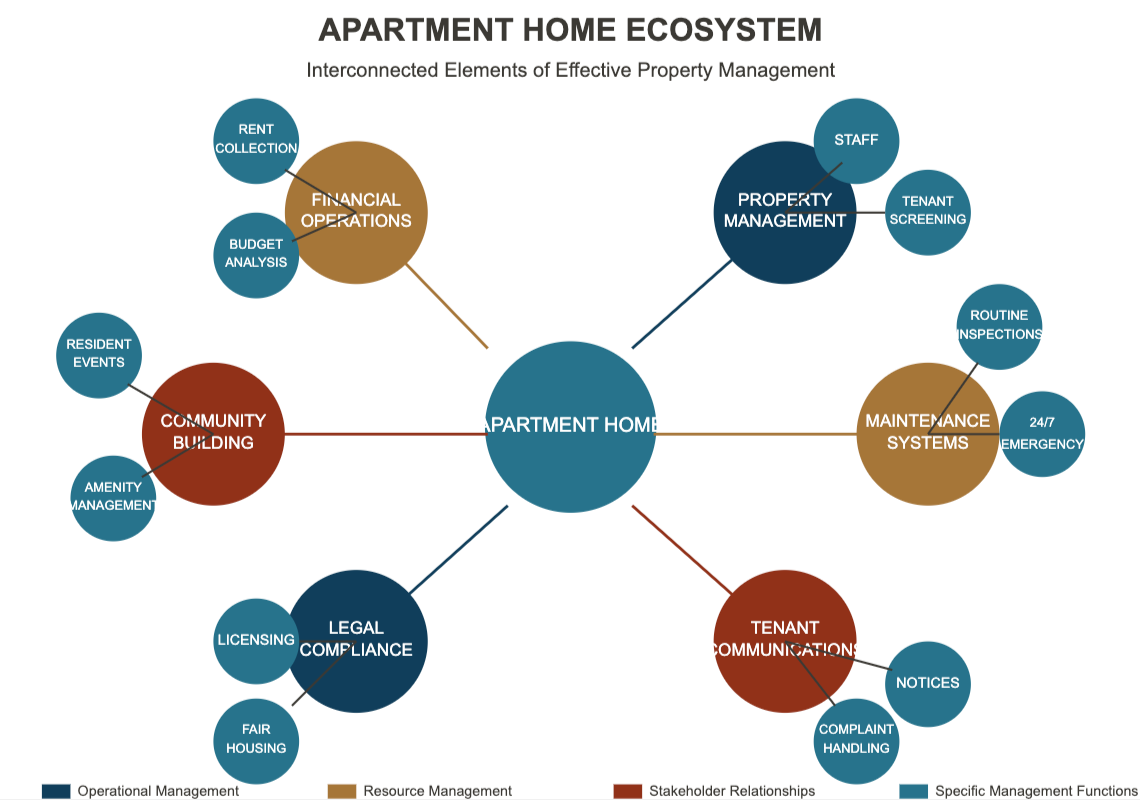
Valuable Resources for Further Learning
For property managers seeking to deepen their knowledge of apartment home management, these resources offer valuable insights and practical guidance:
- National Apartment Association (NAA) - Offers education, advocacy, and networking opportunities specifically for the apartment industry, including certification programs for property managers.
- HUD's Office of Multifamily Housing Programs - Provides comprehensive resources on federal housing regulations, compliance requirements, and program guidelines.
- Institute of Real Estate Management (IREM) - Delivers professional development resources and credentials specifically for property management professionals, including specialized courses on multifamily management.
- "Property Management" by Robert C. Kyle - A comprehensive textbook covering the fundamentals of property management with specific sections on apartment operations.
- Apartment Management Magazine - Industry publication offering practical articles, case studies, and trend analyses focused on apartment management challenges and solutions.
What Next...
The apartment home sector continues to evolve with changing demographics, technological innovations, and shifting regulatory landscapes. Forward-thinking property managers who commit to ongoing education, operational excellence, and tenant-centered approaches will find abundant opportunities in this essential housing segment.
Take the first step toward elevating your apartment home management approach by implementing one key best practice from this article in the coming week. Whether enhancing your maintenance protocols, refining your tenant communication strategy, or reviewing your compliance measures, consistent improvement is the hallmark of successful property management.
Your commitment to excellence not only benefits your business operations but also enhances the living experience of the millions of Americans who call apartment homes their homes. In this way, effective property management contributes not just to business success but to community wellbeing and housing stability across the nation.


